We often don’t know where they come from, their real names or even why they do what they do. Yet, as an audience, we are frequently enamored with the glossy thrill of power offered to a hitman, a silent assassin disappearing into the night. Why hitmen have been such a genre staple isn’t hard to see – you put a gun into the hand of a major character, and boom! drama. The idea of a hired gun, someone whose line of work involves ending human lives without passion or emotion, is naturally fraught with tension and emotional weight.
We here at The Playlist love a good assassin flick as much as anyone, from Melville’s classic underworld fables to modern-day reinventions like Joe Wright‘s “Hanna,” which opens today. While Wright’s film is laced with the kind of perverse humor native to the genre, its protagonist is far from the typical ilk – a young woman, albeit exceptionally well-trained in the deadly arts. The career choice that crosses gender and cultural lines, The Playlist is proud to present our take on the many hired killer movies that have crossed our path – and survived:
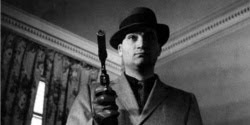 “Blast of Silence” (1961)
“Blast of Silence” (1961)
It’s the adoration of filmmakers like Martin Scorsese (and its inclusion as part of the illustrious Criterion Collection) that seems to have saved “Blast of Silence” from black-and-white B-movie obscurity. That’s not to say the movie isn’t great, because, well, it is, but the tale of a low-level leg breaker (Allen Baron) hired to execute a gangster isn’t, at least from the outset, all that unique. But what makes “Blast of Silence” so compelling, besides its amazingly gruff narration, is its singular bleakness and commitment to showcasing the day-to-day ugliness of being a working class sociopath. If you don’t feel like taking a shower immediately after watching “Blast of Silence” (those rats!), then you probably weren’t paying attention. [A]
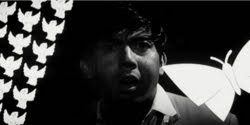 “Branded to Kill” (1967)
“Branded to Kill” (1967)
Probably the best known, most widely seen film by singular director Seijun Suzuki, “Branded To Kill” has a lot to answer for – namely, how anyone, anywhere, could get away with directing a film this batshit insane for a major studio. The film that drove a stake between Nikkatsu Studios and Suzuki is a glorious free-association action thriller with a groovy bent that you just can’t quite get a handle on. Goro Hanada (frequent Suzuki colab Joe Shishido) is hitman Number Three. After a botched assassination, he is summarily stripped of rank and…branded to be killed! Also, he can only achieve full arousal when faced with a bowl of steaming rice. Suzuki is a madman fueled by improvisation with Shishido as his muse/puppet and “Branded To Kill” easily avoids classification, coasting on weirdness and visual trickery that feels brazenly fresh. Any further description would genuinely take away from the experience of puzzling out a frequently confusing but never dull feature, so Netflix away. [A-]
 “Collateral” (2004)
“Collateral” (2004)
In a colorful marquee career, one can make the case that Tom Cruise has never been scarier or more complex as Vincent, the grey-haired hitman at the center of one of Michael Mann’s typically lonely L.A. nights. Calm to the core, the silver-maned killer has commandeered taxi driver Jamie Foxx for the evening, forming a queasy, tense relationship between them where their fates are intertwined – Foxx fears for his life, while Cruise plays his killer as a man with an unspoken, borderline desperate motivation to meet a death quota. Not quite top-class Mann, “Collateral” unfortunately ends in a foot chase that seems overly conventional for the talky, moody thriller that preceded these events, but it’s the sort of genre gamble that Mann can perform in his sleep, providing a crowd-pleasing caper to an intense chess match of character study. [A-]
 “Confessions of a Dangerous Mind” (2002)
“Confessions of a Dangerous Mind” (2002)
When Chuck Barris became the bad taste baron of tacky sixties and seventies game shows, his public reputation was as an opportunistic dim bulb who found his niche and exploited it to the fullest. What George Clooney‘s directorial debut supposes is that Barris was actually overachieving, his schlocky public persona a cover for his exploits as a CIA hitman. Clooney and screenwriter Charlie Kaufman take their cues from Barris’ straight-faced memoirs, depicting a shadowy, back-stabbing world of back-alley dealings and often fatal interactions with ill-advised lovers, while also finding room for all the CIA spy stuff (rimshot!). Within the film, which is nonetheless a love letter to the era in television, filled with practical effects, flimsy scene transitions and a muted color scheme, there is not only a typically brilliant, nuanced turn from Sam Rockwell as Barris, but also a tragic candle-wick characterization from Rutger Hauer playing a killer in his last days on the job. [A]
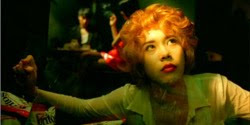 “Fallen Angels” (1995)
“Fallen Angels” (1995)
Seen as a companion piece to the probably-perfect “Chungking Express,” Wong Kar-Wai‘s fifth film is less immediate and therefore less beloved, even if some of its moments (such as the mute/father/video-tape sequence) are just as heart-wrenching. “Fallen Angels” shares a two-story plot with its sister, however here the director intercuts them as opposed to closing one before beginning another. What doesn’t help is that both stories are radically different- one a drama about a for-hire assassin, the other a more comedic-tale of a petty criminal – and first time viewing can be rather chaotic and jarring given the varying tones going in and out. Reflection and subsequent watches eliminate any confusion or irritation and reveal hefty substance, with the “hitman” story starring Leon Lai (“3 Extremes II“) standing out most. This story follows a killer and his book-keeping partner, a female that sets up his murders and cleans the scene after the deed is done. Despite never meeting each other, they lead an unconventional romantic relationship, one that fizzes into ugliness when the killer breaks off their ties via jukebox song. Sounds like your typical quirkiness from Wong Kar-Wai, but most of the cuteness is saved for the other narrative. Instead, he uses the story as an opportunity to play Mellville (long, quiet stretches of him either post-kill or approaching the kill) and craft quick, gritty shoot-outs no one knew he was capable of doing. Long time collaborator Doyle shines brightest in this segment too, switching film stocks and speeds in an unpredictable fashion that somehow doesn’t feel random, but wild. Wong has only been this on-the-surface cool in “As Tears Go By,” which wasn’t bad by any means but definitely hampered by an excess of sentimentality. Maybe this one’s a bit colder, but the topic of yearning and criticisms of indecisiveness tug on the heart’s strings just as hard, only without the mawkish grabs. [B+]
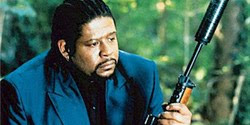 “Ghost Dog: The Way of the Samurai” (1999)
“Ghost Dog: The Way of the Samurai” (1999)
Arguably Jim Jarmusch‘s most commercial film, but certainly not his only dip into the crime genre to date, “Ghost Dog: The Way of the Samurai” is an odd blend. Following Forest Whitaker as a hitman in the employ of the Jersey mob, who follows the Hagakure (the samurai code), it’s a conscious nod to Melville’s classic “Le Samourai,” but brings all kinds of added elements into the mix — Kurosawa, philosophy, hip-hop (thanks to the outstanding soundtrack by Wu-Tang Clan member RZA) and even cartoons — Felix The Cat, Betty Boo and Woody Woodpecker all crop up, while the mother of Pearline, the young girl that Ghost Dog befriends, is shot only from the waist down, in a manner reminiscent of Mammy Two Shoes from the “Tom & Jerry” cartoons. As you might expect from Jarmusch, it’s a thoughtful, at times almost spiritual, picture (mostly thanks to Whitaker’s typically soulful lead performance, and excellent support from John Tormey as his ‘master,’ Louie. What’s more surprising is how well the director handles the action — the final set-piece in particular is close to thrilling. A deserving cult classic, even if it doesn’t hold up to the very best of Jarmusch’s output. [B+]
 “Grosse Point Blank” (1997)
“Grosse Point Blank” (1997)
Some films you know are going to be terrific. You put great actors, director and writer on a project together, and it’s a good bet that the film will turn out well. But some films are greater than the sum of their parts, and one such example is “Grosse Point Blank,” a film where virtually no-one involved has made anything even half as good since. John Cusack gives perhaps the seminal Cusackian performance as hitmen Martin Blank, who due to an unfortunate work commitment, ends up returning to his home, the Detroit suburb of Grosse Point, on the weekend of his ten-year high school reunion, and reconnects with Debbie, the girl he ditched on prom night. Director George Armitage has only made one film since, the disastrous Elmore Leonard adaptation “The Big Bounce,” but he knocks it out of the park here — expertly balancing a tricky meld of tones and genres, for a final product that’s hilarious, thrilling and even a little moving — witness Cusack’s quietly heartbreaking encounter with his mother. The script is remarkably good, and eminently quotable, and the cast are top-notch across the board — put it this way, it’s a film where both Minnie Driver and Dan Aykroyd give great performances. It’s a treat for the ears, too — Cusack’s pal Joe Strummer wrote the score, and the two-volume soundtrack, which features Violent Femmes, The Specials, The Clash, Pete Townshend, Siouxsie & The Banshees, The Pixies and Grandmaster Flash, is probably the greatest filmic selection of ’80s-themed cuts to date. [A]
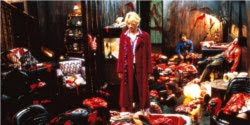 “Ichi The Killer” (2001)
“Ichi The Killer” (2001)
It’s easy to understand the backlash surrounding a director that not only revels in violence, but is held in high regards by the same headache-inducing nerd crowd that designate a videogame mature or good if it sports a dark palette and murder. Even so, equating Takashi Miike to the creators of “Saw” is not only naive, it’s actively ignoring talent. “Ichi the Killer,” arguably his most well-known effort, follows three characters after the murder of a crime boss: Kakihara (Tadanobu Asano, “Mongol“), central weirdo and sadomasochistic next-in-line; Kaneko (Hiroyuki Tanaka), former cop and present gunman in the gang; and titular character Ichi (Nao Omori, “Demonlover“), a psychotic murderer being manipulated to pick off Yakuza members one-by-one. All of these perspectives give the over-the-top thriller/drama/comedy an unfortunate two-hour running time, it’s also no help that the movie doesn’t find its footing until the first 30 or so minutes are through. However, those who don’t throw in the towel will be pleasantly surprised when things finally click, with Miike jumping perspectives seamlessly and giving the film’s own crude, bizarre nature a more playful, less forced handling. There’s also some smarts in its ending, which preps for an all-out battle between two vicious nuts but instead calls its own shots in a way that is comical, unnerving, and (taking into account the final frame) somehow touching. Aside from that there’s admittedly not much depth, and while the majority of the flick is indubitably engaging, the barf bags handed out before each TIFF screening accurately describe the tone and intention of the piece. [B-]
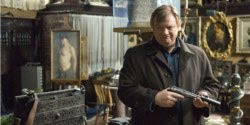 “In Bruges” (2008)
“In Bruges” (2008)
While most movies based on plays are unappealing static in their staging and shots, this original script written and directed by playwright Martin McDonagh is a near-perfect example of cinematic style that takes full advantage of its picturesque Belgian locale. Despite his clear talent as a director, McDonagh retains a playwright’s ear for dialogue. The Oscar-nominated script is witty and fresh, even though its basic premise–a hitman coming to terms with his crimes–is nothing new. After a botched job, freshman killer Ray (Colin Farrell) and more experienced hitman Ken (Brendan Gleeson) are sent to the titular city to cool their heels. Ray is hilariously miserable, constantly slagging his surroundings with bits like, “If I grew up on a farm, and was retarded, Bruges might impress me but I didn’t, so it doesn’t.” If that offends, run fast, because that’s as kind as this wonderfully misanthropic film gets. Farrell redeems himself of any past sins here and Gleeson continues to impress, but Ralph Fiennes steals scenes as the pair’s foul-mouthed boss. [A]
 “Kill Bill Vol 1/2” (2003)
“Kill Bill Vol 1/2” (2003)
Let’s move past the proper accolades paid to Tarantino’s two-parter collage epic and focus briefly on his approach to Bill’s team of killers. While O-Ren Ishii (Lucy Liu) settles into a “queen of the underworld” groove, Budd (Michael Madsen) and Elle (Daryl Hannah) prove more difficult to get a handle on, especially Hannah’s slippery, brutal and vengeful one-eyed dame. We are not used to seeing pot-bellied former assassins working at strip bars and Tarantino is wise to show Budd berated by the slimy owner (Larry Bishop). Even though we are clearly aware of what the man known as Sidewinder is capable of, Budd takes the abuse, committed to a life wasting away in parched wasteland. That’s just scratching the surface – consider what the Bride (Uma Thurman) is put through despite her world-renowned assassin status. Just food for thought as “Kill Bill” continues to impress. [A-]
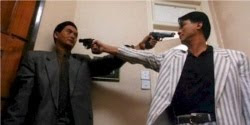 “The Killer” (1989)
“The Killer” (1989)
Watching John Woo’s balletic symphony of violence is something of a bittersweet moment. The film is an electric tale of a hitman trying to do right by the girl he’s blinded, and the dedicated cop on his trail, a film bathed in gunfire, drenched in the macho melodrama of men with big hearts and bigger guns. But to dip your toe into the world of “The Killer,” which builds to an action crescendo never quite seen before or since, is to witness an action epic that you know can almost never be replicated. Woo imbues the hitman movie tropes with dignity and a sly sense of humor with Chow Yun-Fat’s charismatic moviestar performance, but also has time for the memorably kitschy dichotomy between cop and criminal, taking cheap-seat theatrics writ large and setting them as the foreground to an orgy of bullets. The most exciting two hours you’ll spend watching a movie. [A]
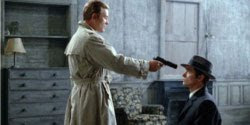 “Le Samourai” (1967)
“Le Samourai” (1967)
“There is no greater solitude than that of the samurai unless it is that of the tiger in the jungle… Perhaps…” So goes the on-screen text that introduces Alain Delon as the hero of Jean-Pierre Melville’s crime-classic “Le Samourai” (in one of the all-time great character introductions) and it’s something that reflects the picture as a whole. Jef is a professional killer, and a man with few connections, or even signs of humanity. His minimalist lifestyle (mirrored by Melville’s directorial technique) starts to fall apart when he’s watched leaving the scene of a hit — turning himself into a target by his employers. Delon was never better, slowly letting hidden depths creep into the initially super-cool exterior, and the film’s been influential to a point — almost everything on this list, from “The Killer” to “The American,” owes a giant debt to Mellville’s film. And who among us can say we’ve never bought a beige trenchcoat in the hope of looking a little bit more like the anti-hero here?… Melville had dipped into the underworld well many times before, but never as completely or perfectly he does here — it’s his masterpiece of the genre, to the degree that, when he followed it up, it was with the autobiographical wartime drama “Army of Shadows” [A+]
 “Leon” (1994)
“Leon” (1994)
Almost threatening to overdose on style, Luc Besson’s “Leon” aka “The Professional” is yet another example of the hitman-with-a-heart-of-gold movie. But Besson’s American debut pairs the oft-childlike, efficient killer Leon (Besson favorite Jean Reno) with wiser-than-her-years tween Mathilda (Natalie Portman in her film debut), with the latter desperate to learn the former’s craft after the murder of her entire family. Gary Oldman is Crazy-with-a-capital-C as the crooked cop responsible, and he’s almost too much. However, it’s the interaction between Reno and Portman that keeps the movie watchable, though the international cut does more than hint at 12-year-old Mathilda’s attraction to the far older Leon. There are kinetic, well-edited action scenes, but “Leon” is at its most engaging in a charming scene when Mathilda and Leon pretend to be Hollywood greats Marilyn Monroe, Charlie Chaplin, Madonna and John Wayne. [B+]
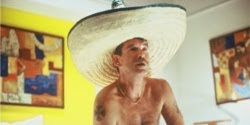 “The Matador” (2005)
“The Matador” (2005)
In Richard Shepherd’s shaggy-dog friendship story, Pierce Brosnan plays a hired killer having a crisis of faith as he realizes he has no friends or family, unhappily leading an empty lifestyle. Trouble brews when he decides to remedy this, befriending a mild-mannered salesman (Greg Kinnear, typecast) and his harried wife (a very funny Hope Davis). The film touches on pretty pedestrian midlife crisis gags and it builds to a conclusion that unsuccessfully straddles the line between silly and believable. But Brosnan is 100% game, giving a comic performance of extraordinary sadness, Shepherd allowing this sadsack to shine through a depressing stock wardrobe, a tacky mustache, and a ribald, wholly inappropriate sense of humor. [B-]
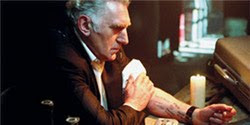 “The Memory of a Killer” (2003)
“The Memory of a Killer” (2003)
It’s safe to assume that a hired killer needs to remember their target. So just how dangerous is a silver-haired career murderer with an onset of Alzheimer’s? Known as “The Alzheimer Case” beyond the U.S. this 2003 Belgian entry to the Academy Awards is a well made, if conventional, thriller held aloft by a genuinely fascinating concept – killer Angelo Ledda (Jan Decleir) is literally losing his mind. Racked by episodes of memory loss, Ledda wages war on a former employer while meticulous Detective Eric Vincke (Koen De Bouw) closes in on a conspiracy that will bring both men together for an anti-climatic, but still undeniably effective finale. It hasn’t aged particularly well due to some aggressive editing flourishes, but still works as an engaging thriller. [B]
“Munich” (2005)
Though not every film he made during this period was a success (we’re looking at you, “The Terminal”), Steven Spielberg was on quite a roll in the early 2000s. In the summer of 2005 as his “War of the Worlds” re-imaginging was hitting theatres, he was still deep in filming “Munich,” (his sixth film in four years), which he would rush to complete for its December release. This urgency finds its way into the film which even with an epic running time of nearly 3 hours, never drags for a moment. Based on the true story of the men assembled to assassinate the people behind the Israeli murders at the 1972 Munich Olympics, “Munich” shows the veteran filmmaker operating on pure instinct. If you’re not familiar with the events depicted, you’ll have to pay close attention to keep up because thankfully the film doesn’t slow to bog the audience down with exposition. Spielberg has always had a knack for casting and the ensemble here is no exception: a terrific Eric Bana (who hasn’t found a role this great since) leads the team with support from Daniel Craig, Ciaran Hinds, Mathieu Kassovitz and Geoffrey Rush among others, all giving it their “A” game. The rushed pace of the film (and its production) mostly result in a great energy throughout (the suspense sequences are expertly done and the violence is clumsy, ugly and brutal) but a few stumbles in the last act keep it from being a true masterpiece. [A-]
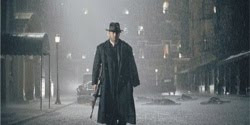 “Road To Perdition” (2002)
“Road To Perdition” (2002)
After sweeping the Oscars with his debut film, the divisive suburban satire “American Beauty,” Sam Mendes turned his attention to this graphic novel by Max Allan Collins and Richard Piers Rayner. Tom Hanks (in his darkest role to date) stars as a hitman, Michael Sullivan, seeking revenge on his former employer and surrogate father, John Rooney (Paul Newman) for killing his family. He goes on the run taking along his young son (Tyler Hoechlin) while being pursued by a nasty assassin (a nearly unrecognizable Jude Law) and a seething Daniel Craig appears as Rooney’s jealous son. The graphic novel may have been pulpy but Mendes and screenwriter David Self strip the story down bare to a film about fathers and sons and the consequences of violence. The dialogue is spare but the images tell the story; it was the last film to be shot by veteran cinematographer Conrad L. Hall (“Butch Cassidy & The Sundance Kid”) and it’s jaw droppingly beautiful. At the time of it’s release, the film was a modest hit receiving positive reviews and grossing over $100 million in the U.S. alone. But a decade later and it seems to have been almost forgotten which is a shame because this is a film that deserves to be discovered. [A]
 “The American” (2010)
“The American” (2010)
While “The American” befuddled mainstream audiences (this reviewer’s mother is convinced the only reason George Clooney made the movie is because he could stay at his house at Lake Como while shooting) that mostly had to do with the film’s marketing campaign, which sold it as a high-octane thriller instead of the atmospheric mood piece it really was. And, taken on its own, “The American,” directed by music video auteur Anton Corbijn, is a corking contraption – a gorgeously rendered story of an assassin hiding out in an idyllic Italian village whose past catches up with him. The film is deliberately paced without ever being draggy, and despite some heavy-handed allegorical touches (we get it – butterflies), is nearly note perfect in its tone and, pardon the expression, execution. [A-]
 “The Hit” (1984)
“The Hit” (1984)
Stephen Frears’ 1984 crime drama meets on-the-road-morality-play, one of the director’s earlier big-screen works, is instantly engaging — the film boasts a hypnotic opening guitar instrumental by Eric Clapton that help sets the hazy mood, a score by Paco de Lucia, and striking icy photography by Mike Molloy (neither of whom have worked as solidly as they should have since. The thriller, which follows a gangster turncoat (Terence Stamp), kidnapped by a pair of hitmen working for those he testified against ten years earlier, is perhaps now best known as our feature-film introduction to the great Tim Roth, who was only a tender 21 years of age, and green as hell. The trio (completed by a terrific performance from John Hurt as the elder of the assassins), while at odds, begin a strange dynamic: Hurt holds onto an ominous and cool demeanor, while the carefree and mortality-aware Stamp rambles on about how he knew this day was coming. His nonchalant attitude and fearlessness infuriates Roth, who takes it as psychological mind-fuckery, unable to fathom why he’s not trembling in fear over his imminent demise. It’s one of the more existential picks on this list, for sure, and Frears shows why, nearly thirty years on, and even after the likes of “Cheri” and “Tamara Drewe,” we’re still excited every time he’s making a movie. [A]
Honorable Mentions: Just as the idea of someone receiving money in return for taking a life is presumably as old as the concept of money, the hitman genre was around well before “Le Samourai” — Frank Tuttle’s noir classic “This Gun For Hire,” with Veronica Lake and a chilling Alan Ladd, being one of the earlier examples, along with the Paris-set “Gunman on the Streets” (from the same director, Frank Tuttle).
1969’s “Machine Gun McCain,” a sort of spaghetti noir from director Giuliano Montaldo, is mostly forgotten, but the central performance from John Cassavettes more than makes it worth checking out. “The Day of the Jackal,” based on Frederick Forsythe’s best-seller, still grips, which is much more than can be said for the remake “The Jackal,” with Bruce Willis. “The Marseille Contract” is the kind of hard-boiled British thriller that Michael Caine specialized in in the 1970s, but it doesn’t deserve to be mentioned in the same breath as, say “The Ipcress File” or “Get Carter.”
“Prizzi’s Honor,” one of John Huston’s last films, is terrific, and one that only time and space prevented us from covering, while “Cohen and Tate,” the directorial debut from “The Hitcher” writer Eric Red, at least has a good central performance from Roy Scheider, and a very young Adam Baldwin (“Firefly”). “Nikita” was the film that made Luc Besson’s name internationally, and while it’s certainly better than the Bridget Fonda-starring remake, it hasn’t aged well, and certainly pales next to “Leon.” Also worth avoiding: “Smokin’ Aces,” “Assassins” and anything with Nicolas Cage in it.
– Mark Zhuravsky, Rodrigo Perez, Cory Everett, Gabe Toro, Oli Lyttelton, Kimber Myers, Drew Taylor, Christopher Bell






